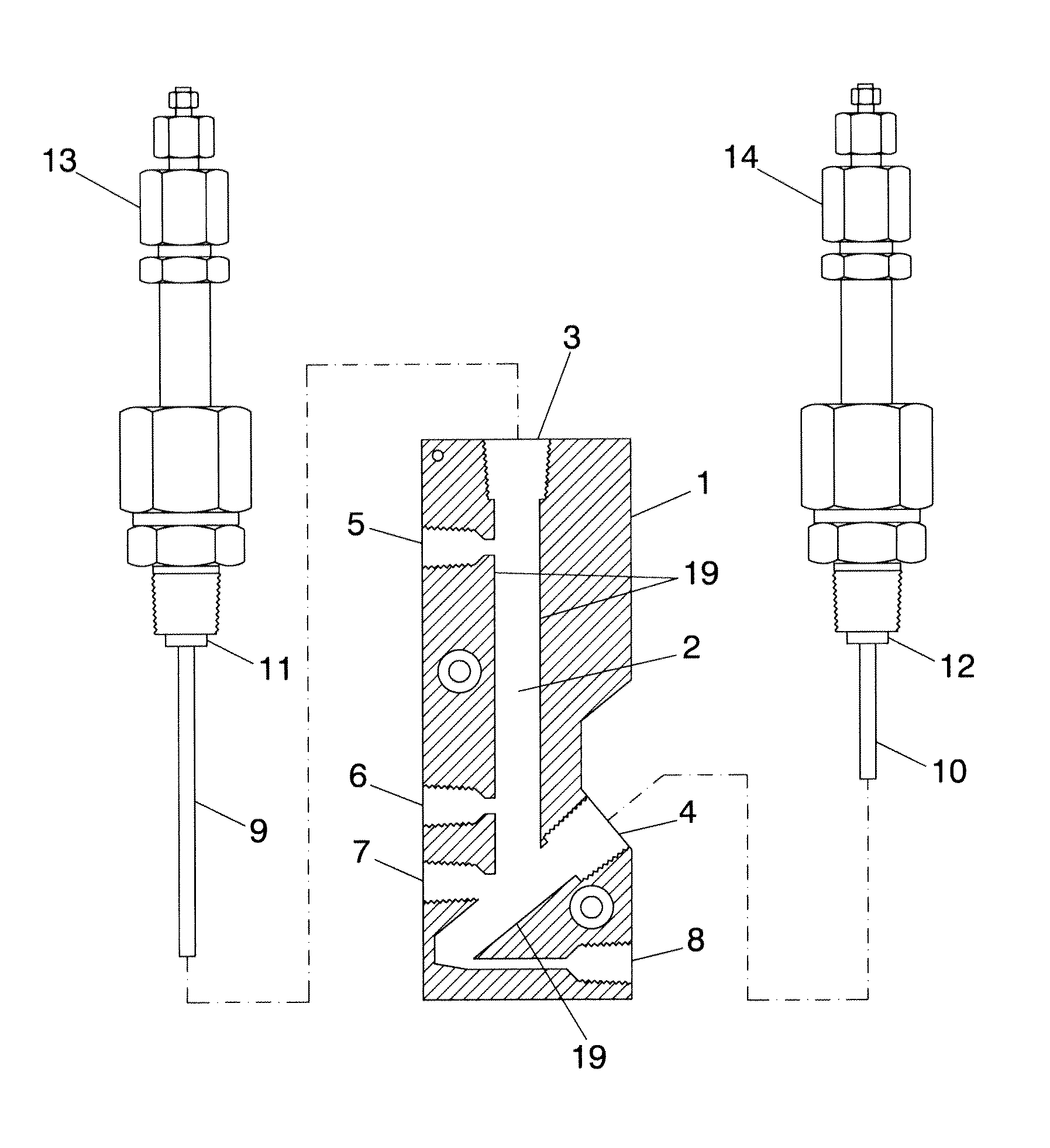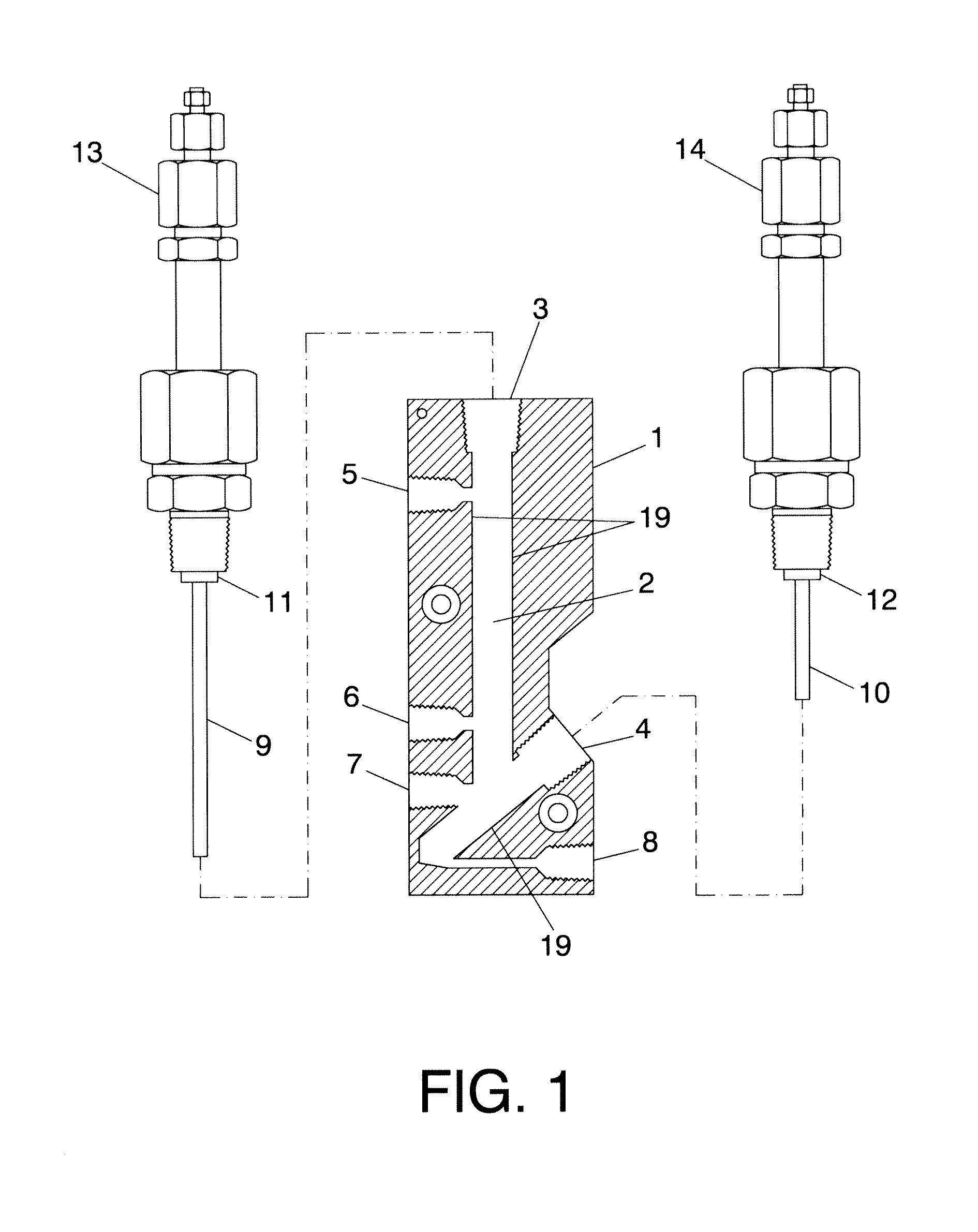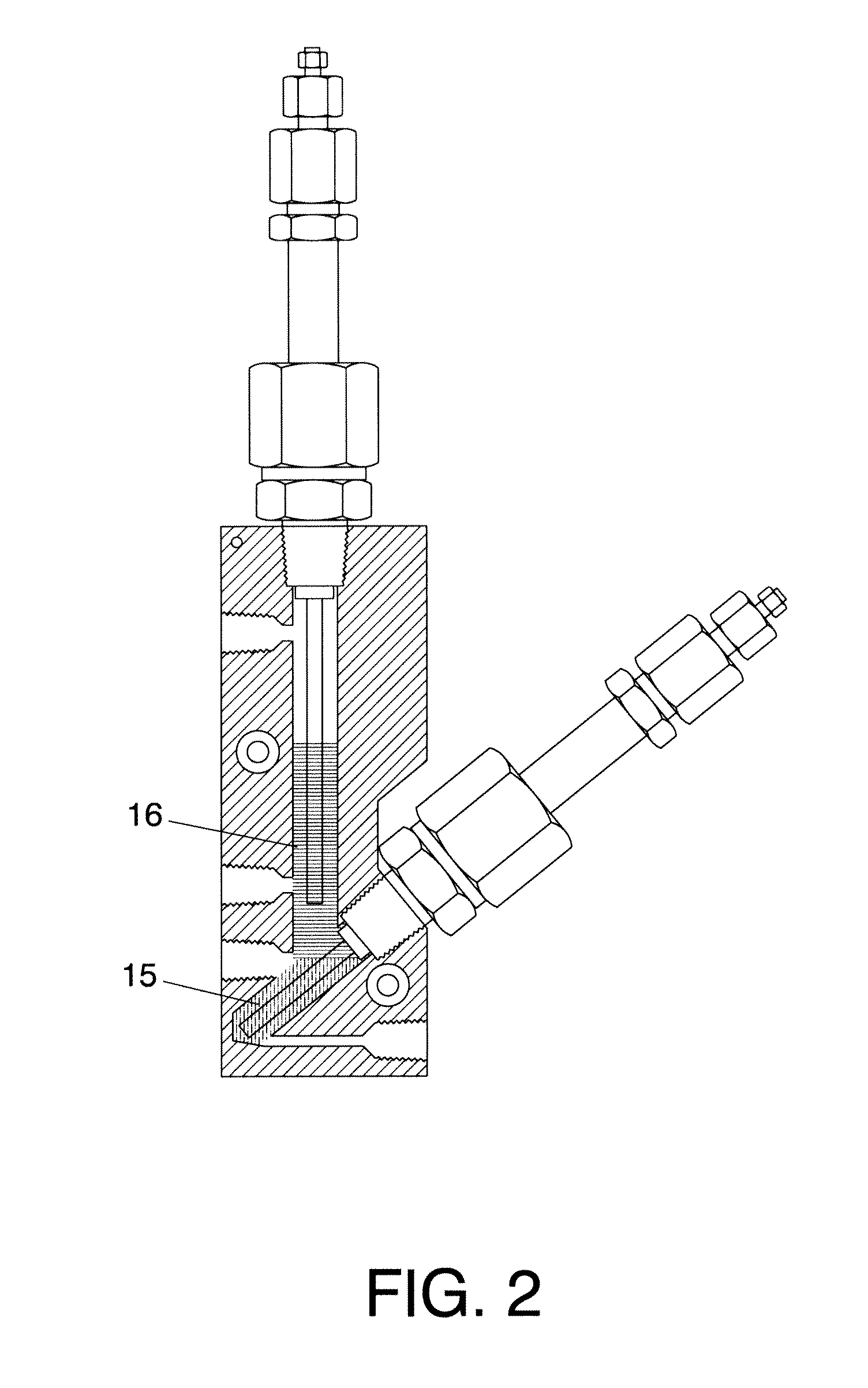Capacitive separator device
a capacitive separator and capacitive separator technology, applied in the direction of separation processes, instruments, lighting and heating apparatus, etc., can solve the problems of critical working pressure range, critical instrument size, precision, etc., and achieve the effect of small dead volum
- Summary
- Abstract
- Description
- Claims
- Application Information
AI Technical Summary
Benefits of technology
Problems solved by technology
Method used
Image
Examples
Embodiment Construction
[0022]In light of the figures, below a preferred embodiment of the separator device of this invention is described.
[0023]A number of machinings are performed in a body (1), preferably metallic, in order to generate a tank (2) in the interior thereof which has a complex geometry and a capacity of about 10 cm3, as may be observed in FIG. 1, preferably made of stainless steel, the geometry whereof corresponds to a rectangular parallelepiped with a lateral groove that facilitates the housing of a water probe (10). The tank (2) obtained is endowed with a longitudinally perforated part and an obliquely perforated part. Both have a 9-mm diameter and come together at the level where a fluid inlet (7) is located.
[0024]The tank (2) acts as a thermal condenser to separate three phases, two liquid phases (hydrocarbons and water) and a gaseous phase. Two probes (9) and (10) are placed at both sides of the tank. The tank (2) is perforated in a solid part (1), the geometry whereof corresponds to a...
PUM
| Property | Measurement | Unit |
|---|---|---|
| pressures | aaaaa | aaaaa |
| total volume capacity | aaaaa | aaaaa |
| total volume capacity | aaaaa | aaaaa |
Abstract
Description
Claims
Application Information
 Login to View More
Login to View More - R&D
- Intellectual Property
- Life Sciences
- Materials
- Tech Scout
- Unparalleled Data Quality
- Higher Quality Content
- 60% Fewer Hallucinations
Browse by: Latest US Patents, China's latest patents, Technical Efficacy Thesaurus, Application Domain, Technology Topic, Popular Technical Reports.
© 2025 PatSnap. All rights reserved.Legal|Privacy policy|Modern Slavery Act Transparency Statement|Sitemap|About US| Contact US: help@patsnap.com



